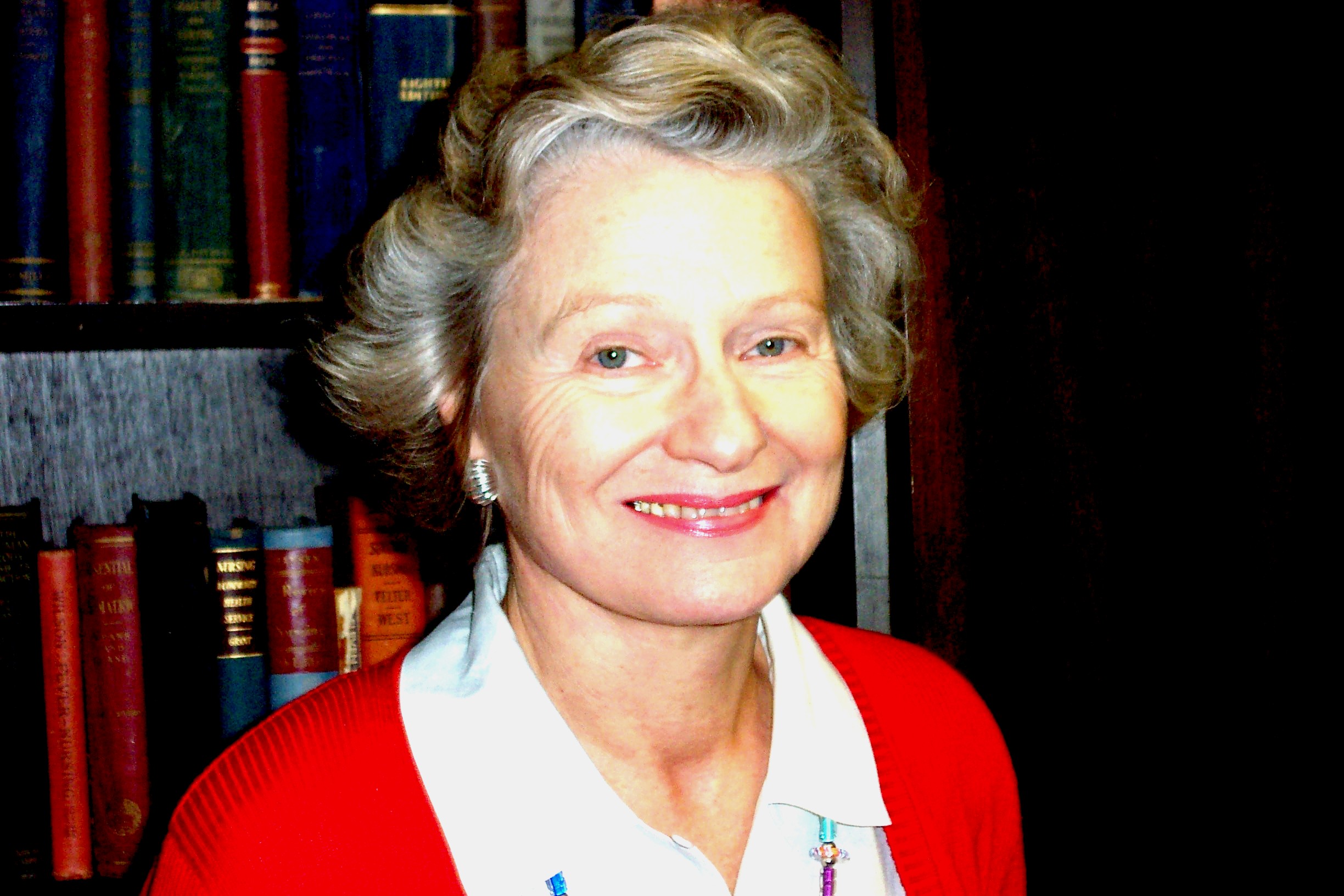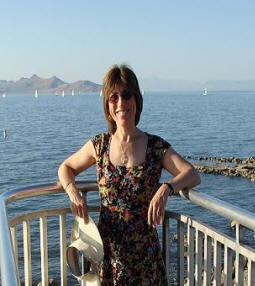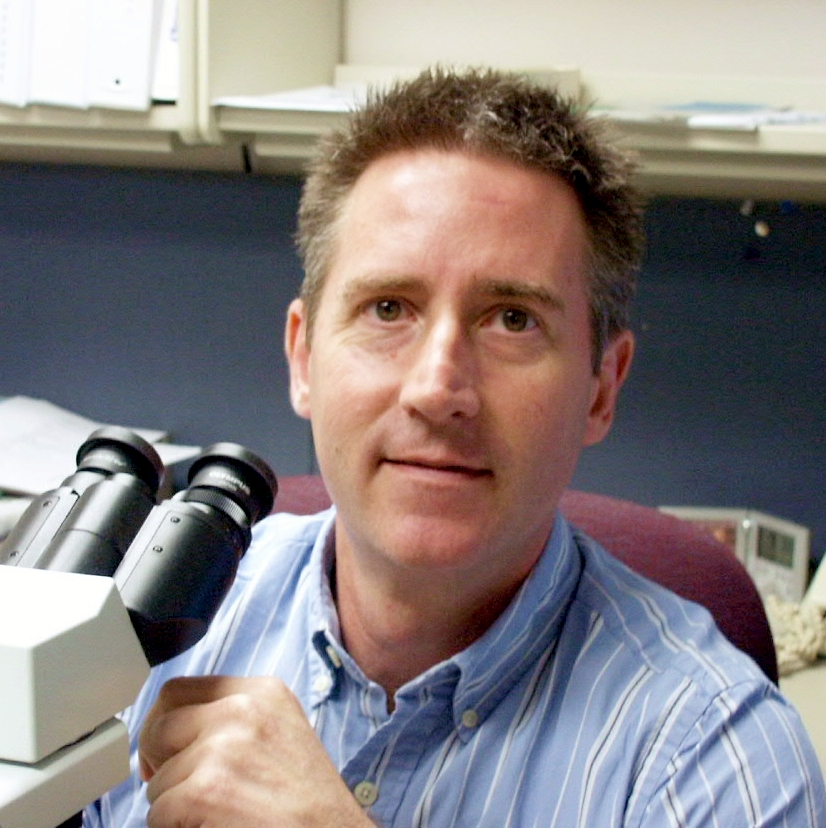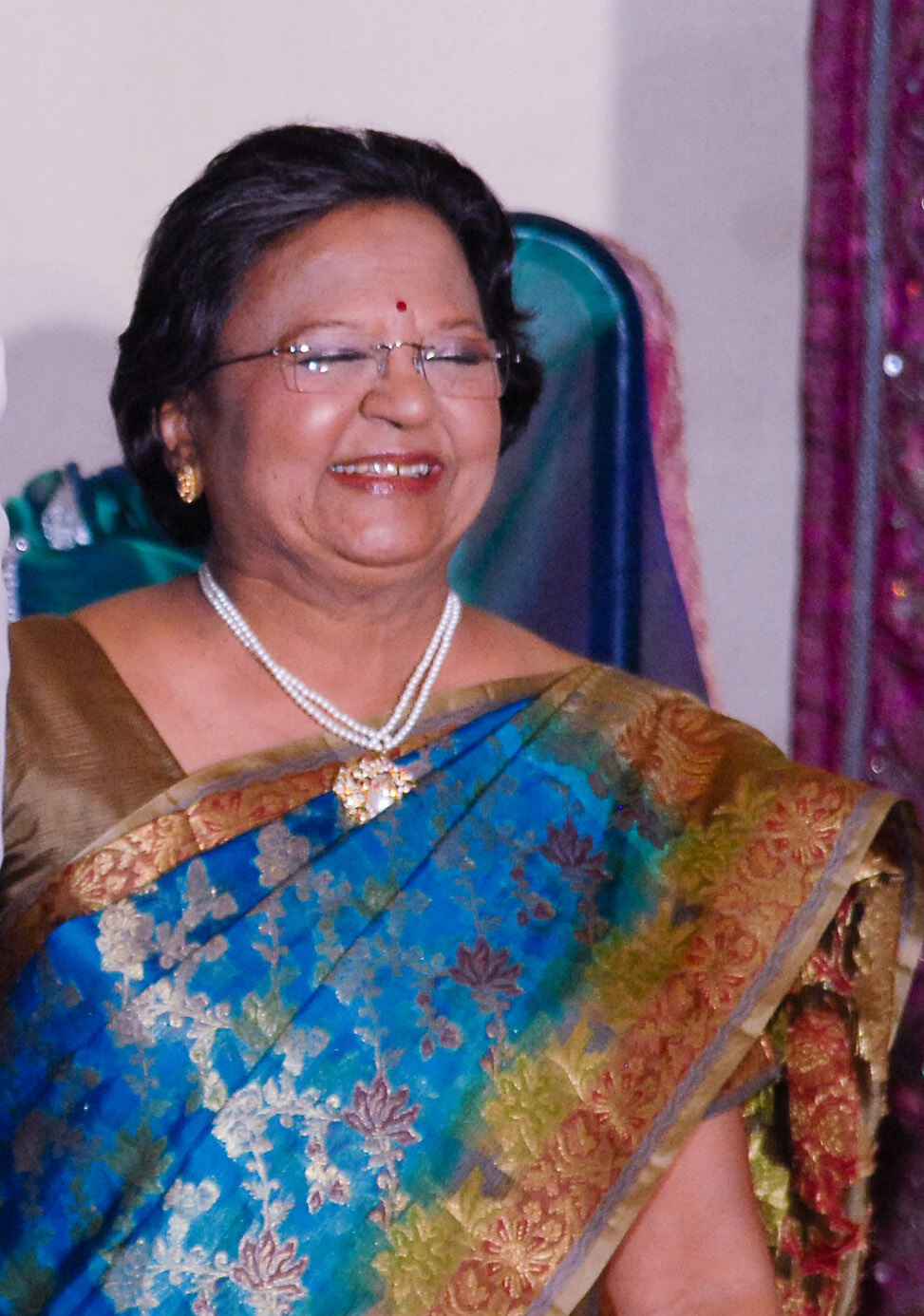|
|
|
|
|
|
 |
S. Lynn
Knox, MD,
School of Medicine, Dept. Anesthesiology
I joined the faculty of the
Anesthesiology Department in 1998 after completing my internship and
anesthesiology residency right here at UTMB. Prior to that I attended
the University of Texas Southwestern Medical School in Dallas. I was
what we call a non-traditional student as I had trained and worked as a
Certified Registered Nurse Anesthetist for years prior to medical
school. This also makes me a perpetual student and probably explains my
interest in adult education.
As the Anesthesiology
Residency Program Director and the Vice Chair for Education for our
Department, I am very involved with graduate medical education. I am
honored to be a member of the UTMB Academy of Master Teachers. I am an
active member of the Graduate Medical Education Committee and serve on
the GME Education sub-committee and the Sub-committee on Operations and
Working Environment. I also serve on the SOM Educational Research
Committee. I am a member of the Society for Education in Anesthesiology,
the Texas Society of Anesthesiology and a member and elected delegate to
the American Society of Anesthesiology.
Over half of my time is
dedicated to clinical services and clinical teaching of residents and
medical students. While formal classroom (or on-line) didactics are an
essential part of resident education, I believe clinical teaching is the
heart and soul of any residency program. Our anesthesiology program is
known for a strong didactic program with a high level of faculty
involvement. With residents scattered on away rotations after Hurricane
Ike, many residents are not located at UTMB and able to attend didactic
conferences, lectures, case discussions, etc. We have also set up off
campus anesthesiology electives for the medical students at locations
with our residents. There is a need for faculty development at these
off-campus sites. I have very limited technological skills, but
recognize these applications could solve many of our problems and
provide new opportunities to improve how we deliver the didactic side of
training.
I am married to Steve Billotte
and although we have no children, our dogs think they are children. We
have a ten year old mostly Lab (D.D.) and a two year old Giant Schnauzer
(Schnauffy). We like to be outdoors as much as possible, and spend a lot
of time looking across at Galveston from our deck on Tiki Island.
|
|
|
|
|
|
|
 |
Aristides Koutrevalis,
MD, FCCP.
School of Medicine, Dept. Anesthesiology
I'm very exited about the ADAPT
program. I have been in the scholars in education program a few
years back and have incorporated much of what I have learned into my
educational curriculum for the
Anesthesiology Critical Care Medicine
fellowship, for which I
am the Program Director. Also being on the GME committee has allowed
me the opportunity to review other programs outside of UTMB and
outside of my own specialty. This review process called External
Review has given me an interesting perspective on how other programs
operate and their perception of success.
Additionally, I am involved in some minor yet
exciting clinical research activities and I am the PI on a few
clinically approved IRBs that are ongoing. It so happens that I
am on the IRB itself (IRB#2) and act in an administrative capacity
reviewing (and usually quickly approving) protocols to protect human
research subjects and allow research to continue safely at our
institution.
Administratively, I am engaged in developing
Policy in the Resuscitation Committee and am helping faculty and
house staff transition the process of CODES with the post IKE and
ensuing changes in the university which I find challenging and
rewarding.
My clinical activities are spent in the
Anesthesia OR (albeit less this year than last) and as Medical
Director of the SICU (although the number of patients has been
cut in half-but they seem to be twice as sick).
In my spare time I spend mitigating my
tiny, destroyed home in Fish Village, and Stuccoing/drywalling the
first floor of my main house on the West End, while waiting for
windstorm to cough up money for my roof. I'll try and send pictures
of clean up crew later. (after I look at the tips on the ADAPT
homepage).
|
|
|
|
|
|
|
 |
Regina Lederman,
R.N., Ph.D., FAAN,
School of Nursing
One of
my recent areas of
research focuses on an innovative joint parent-child educational
intervention program for early adolescent pregnancy prevention, for
which I received a National Institutes of Health RO1 grant award. The
curriculum resulting from the project, PARE: Parent-Child Relationship
Education, was published in 2008 by ERT (Education, Research, and
Training) Associates. For the past 34 years I have maintained a funded
research program focusing on reproductive psychophysiology, on perinatal
health outcomes, and on maternal psychosocial adaptation during
pregnancy and the postpartum in different cultural populations. A third
edition of my book, Psychosocial Adaptation in Pregnancy: Assessment
of Seven Dimensions of Maternal Development, is in press for
publication by Springer. My Prenatal Self-Evaluation and Postpartum
Self-Evaluation Questionnaires on maternal adaptation have excellent
psychometric properties and have been widely used in the United States
and abroad by researchers in nursing, psychology, and other health
science disciplines. The instruments have been translated into several
languages, including Spanish, Norwegian, Italian Swedish, Chinese,
Japanese, and Thai. I have been past North and South American editor of
the Journal of Psychosomatic Obstetrics and Gynecology.
I also conducted a worldwide workshop on
psychosocial adaptation to pregnancy for the heads of 89 Family Advocacy
Clinics of the United States Air Force. I have published in both nursing
and medical journals, and have received several grants and awards for my
research. I was invited to participate in an Institute of Medicine
Committee, National Academy of Science, to study the effects of
professional liability on the delivery of maternal and child health
care. I have been a past-president of the multidisciplinary North
American Society for Psychosomatic Obstetrics and Gynecology.
|
|
|
|
|
|
|

Great Salt Lake |
Ruth Levine, MD
School of Medicine, Dept. Psychiatry
I have been a faculty member at UTMB since 1991. My
husband, Joe, and I have two children. Annie is 10 and David is 13, and
their activities are what keep us active between our busy work lives.
I am Director of
Undergraduate Education in the Department of Psychiatry and Behavioral
Sciences and Director of the UTMB Academy of Master Teachers. In
addition to an intensive teaching schedule, I maintain an outpatient
practice within the Psychiatry department with a specific interest in
mood and anxiety disorders.
I was born in Albany,
New York, but I have lived in Texas since I was 7 years old. I moved to
Galveston when I was 9, and have either lived or worked here ever since.
Both my parents worked at UTMB, so it was natural that I would join the
“family business.” My bachelor’s degree in Liberal Arts was received
from the University of Texas in 1983. My MD was received from UTMB in
1987. I completed a one-year internship in Internal Medicine at UTMB,
followed by a three-year psychiatric residency at Boston University’s
School of Medicine.
Actively teaching
learners in a variety of settings including both undergraduate and
graduate medical education, I have been particularly involved in the
implementation and dissemination of team based learning courses, and I
am also known for my use of the cinema to teach about stigma. I enjoy
participating in many organizations, especially the Association of
Directors of Medical Student Education in Psychiatry and the Team
Based Learning Collaborative. This year I will assume the Presidency
of the TBLC.
I used to have a lot of
hobbies, but now I spend most of my time enjoying (and enduring) my half
grown kids. Together we go to music lessons, Tae Kwon Do, Hebrew School,
scouts, and silly movies. After they go to bed I like to read, watch
movies for my “cinema seminar” course, and occasionally get some sleep.
|
|
|
|
|
|
|
 |
Bill
(Alan) Rampy, DO, PhD,
School of Medicine, Dept. Pathology
I started at UTMB in June of 98 as a
Resident in Anatomic Pathology. Pathology was a reasonable place to
start as I had spent the much of the previous 10 years in a combination
of medical school, a doctorate program in neuroscience and working in a
neurohistochemistry lab. After residency, I stayed at UTMB for a
fellowship in Surgical Pathology. Other than a year spent in basic
science research in toxicology, I have been a Clinical Instructor in
pathology, one year in the Autopsy Division and the remainder as part of
the Division of Surgical Pathology.
My primary activities as
Instructor are, not surprisingly, to teach residents much of the
fundamental concepts and skills necessary for the appropriate handling,
sampling and reporting for surgical specimens. Most of this material is
entirely novel for pathology residents as such topics are rarely, if
ever, part of the medical school experience. Over, the years, as I have
passed on the priceless, pearls of pathology, I have strived to
integrate my interests in pathology informatics, technology and digital
imaging as tools by which to further enhance pathology education as well
as clinical practice. Several projects developed over the past few years
are very much related to the notion of ADAPT.
In 2004, I developed the
Surgical Pathology website as a means to establish a Pathology web
presence at UTMB, provide information for candidate residents/fellows
and host the Photo of the Month results for our Division. Review of
histopathologic slides is the foundation for learning the skills by
which to become a diagnostic Anatomic Pathologist. Daily case sign-out,
as well as “unknown” slide review conferences, provides this necessary
experience. To afford the residents/fellows freedom to study their
unknown and proficiency slides any time & place, I developed a gallery
for the website to which I post dynamic digital scans (virtual slides)
for review. Infopathic, a work-in-progress, is a pikipedia of sorts (a
dictionary linked image gallery), designed such that pathology trainees
may turn to a single resource to learn the seemingly endless catalog of
descriptive terms which contribute to the pathology vocabulary. And my
most recent project (in progress), Pathslides takes the concept of
digital slides, and kicks it up a notch. Pathslides are narrated and
annotated virtual microscopy movies derived to simulate the side-by-side
mentored microscope experience.
As you can tell, I thoroughly
enjoy exploiting all of our technology tools and toys to bring novel
(and, hopefully effective) elements to educate our medical trainees. I
look forward to the ADAPT project and hope to derive new ideas and learn
new skills along the way!
|
|
|
|
|
|
|

|
Daneshvari (Dani) Solanki, MBBS, FRCA.
School of Medicine, Dept. Anesthesiology
I joined the
Department of Anesthesiology at UTMB in 1978. I have been in the
practice of Pain Management from its early days of 1980 and have seen
the specialty evolve right in front of my eyes. I am the director of
Interventional pain service, which I started in 1992. The Pain
Fellowship was then established at this department and since that time
we have graduated a number of fellows who have established successful
pain practices. I am also the Director of Regional Anesthesia and this
has allowed me to develop the acute pain service for adults where we
provide postoperative pain control.
I enjoy
teaching and training new residents and fellows and have been a
recipient of a few teaching awards. We have one of the very best
neurosciences divisions here at UTMB, which is involved in pain
research. I have had the privilege to work with them and mentor a
fellow who has been able to secure a grant for her research so she can
develop her career as a researcher.
One of the
unique experiences I have had was doing pediatric anesthesia in El
Salvador with limited resources. It allowed me to improvise and call
upon my anesthesia skills I had acquired while training in India and
working in Africa. I would recommend to all that if you get an
opportunity to practice your craft in the third world countries, please
do so. The patients are eternally grateful to you and it is very
satisfying! |
|

